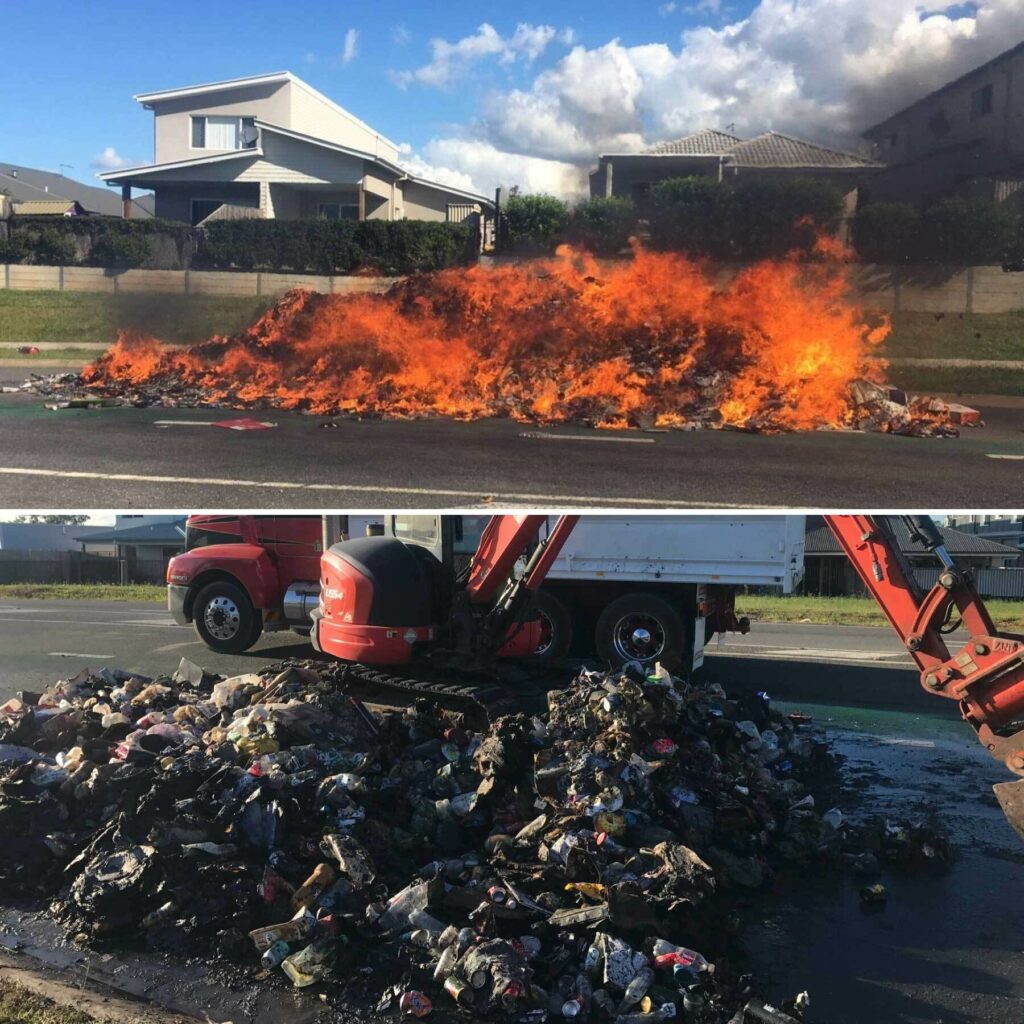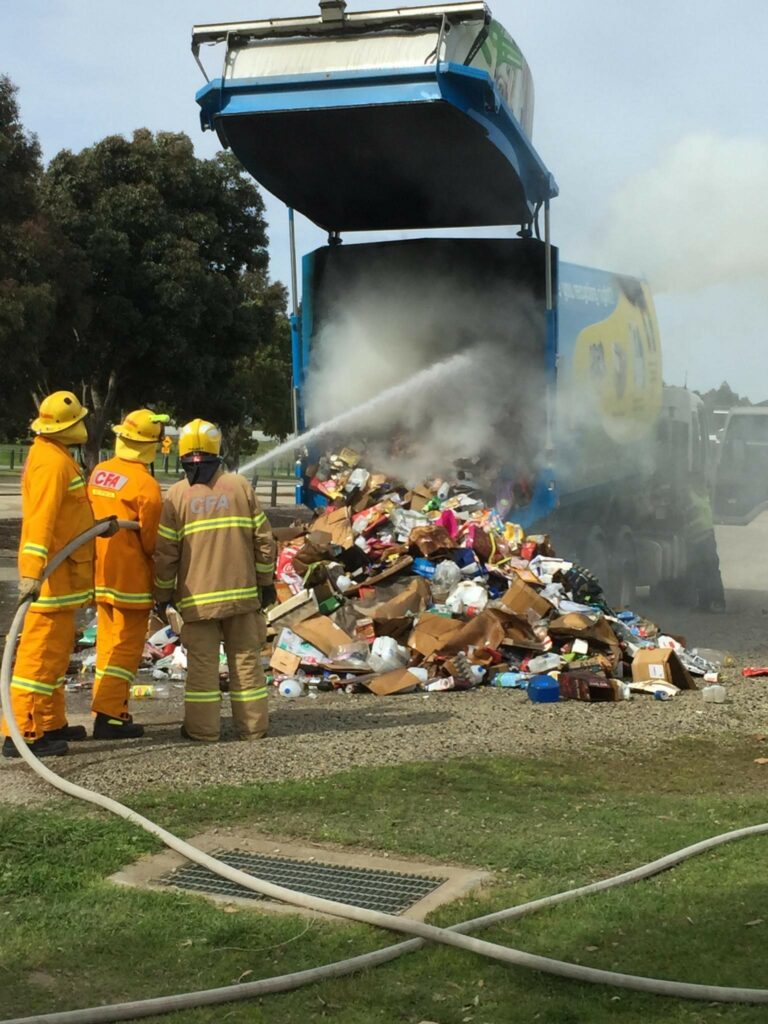Batteries of all types can be found in nearly everything we use today: from button batteries in our car keys to lithium batteries in our smartwatches.
Our busy lives are powered by these little things, and in turn we should never be too busy to discard them properly at the end of their life cycle.
Why is it important to keep used batteries out of kerbside recycling bins?
No battery lasts forever. It’s in the nature of single use batteries to run flat and the same goes for rechargeable batteries which eventually lose their capacity to hold a charge.
This brings us to the most important point: ALL batteries need to be disposed of properly (and safely).
If you’re still guessing where, here’s a hint – it’s not in your wheelie bin!

Pictured: Batteries disposed in kerbside bins can start fires in the back of garbage trucks and threaten the safety of the community at large.
Most batteries contain toxic heavy metals such as nickel, cadmium and mercury that are harmful to human, animal and plant life if released into waterways and ecosystems via landfill.
Additionally, lithium-ion (li-ion) batteries have been named as the culprit behind a rising number of household fires across Australia.
Li-ion batteries are highly sensitive to temperature changes and when discarded in household recycling bins they are likely to catch fire.
Fires can also break out in the back of garbage collection vehicles and at transfer stations where batteries frequently come into contact with flammable waste.
Pictured: Li-ion batteries discarded in a kerbside bin ignited at a Cleanaway transfer station.
What should you do with your used batteries?
Before dropping off your used batteries for recycling, tape the terminals first. To do this all you need is some non-conductive tape such as clear sticky tape, duct tape or electrical tape.
The next step would be to keep them in a glass jar, away from metal objects or heat sources such as stoves, radiators and even the sun!
Also, never store your batteries in a metal container as this can lead to sparks.

Pictured: The fire damage seen in the pictures above was caused by a vape pen battery that was thrown in a kerbside recycling bin.
Where can you dispose of your used batteries?
Aim to drop off your used batteries for recycling every six months. Retail outlets and supermarkets accept all kinds of batteries and e-waste for recycling:
- Aldi: household batteries i.e. AA, AAA, C, D and 9V batteries (both rechargeable and non-rechargeable are accepted)
- Battery World: check with your local store to see which kinds of batteries are accepted
- Bunnings: household batteries i.e. AA, AAA, C, D and 9V batteries, batteries from power tools
- Officeworks: household batteries i.e. AA, AAA, C, D and 9V batteries, laptop/mobile phone batteries
- Woolworths: household batteries i.e. AA, AAA, C, D and 9V batteries.

Pictured: Battery recycling drop-off points at Bunnings (left) and Woolworths (right).
You can also search for a drop off point nearest to you using B-cycle’s list of drop off points.
B-cycle is Australia’s official battery stewardship scheme and is government backed to recycle used batteries, ensuring that the precious materials used to make them are reused.
The scheme has collected more than 918,000 kilograms of used batteries through 3,200 drop-off points across all states and territories in just six months.
Many councils offer free old battery disposal and e-waste recycling programs for residents to bring in their unwanted household batteries.
You can ring your local council and ask if battery disposal and recycling services are available to you.

Pictured: A Cleanaway driver servicing City of Casey had to drop the hot load in his new truck for the County Fire Authority to put out.

Pictured: This laptop with its battery still intact started a fire inside a baler at a Cleanaway sorting facility.
What happens to used batteries that are dropped off for recycling?
Batteries contain up to 95% recyclable materials. Through recycling, any steel, copper and aluminium present in them are reintroduced to the manufacturing sector for use in new products.
The active components of li-ion batteries such as graphite, cobalt, nickel and aluminium are turned into mixed metal dust which forms the building blocks of new li-ion batteries.
Battery manufacturers are seeing the value in battery recycling and are ramping up their roles within the ecosystem in Australia. According to McKinsey Battery Insights manufacturers will benefit greatly from a closed loop for batteries.
End of life li-ion batteries is a waste stream that is growing by 20% each year. As the battery recycling market matures, manufacturers will be able to lower their production costs by reusing raw materials present in used batteries while lowering their dependence on virgin raw material – a win-win situation for both industry and the environment.
Contact us to learn more about how we’re making a sustainable future possible for communities and businesses across Australia.